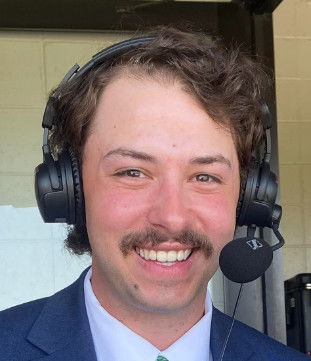
Cubs underwhelm at trade deadline despite clear needs |
The Cubs entered the season with an improved roster from 2024, but room to get better. In fact, their aggressive and unorthodox pursuit of third basemen Alex Bregman, reliever Tanner Scott, and starter Roki Sasaki — it appeared the organization knew that this roster, as currently constructed, needed some help to become World Series contenders.
Fast forward to now, as the calendar moves toward August, the stove around MLB always begins to heat up. Many around the industry expected that the Cubs would be extremely active as buyers at this year’s trade deadline — not so fast. Chicago is currently one game back of first place in the NL Central, but it certainly possesses some holes that some midseason acquisitions could’ve filled. One of these holes is at third base, where the Cubs rank dead last in all of MLB in OPS at 3rd base. Also, last in home runs, RBI, and batting average. While Matt Shaw has been an elite defender at third base when in the lineup, the fact of the matter is, the Cubs are missing a lot of production offensively from the hot corner. While Shaw’s torrid stretch since the All-Star break is pleasing to the Cubs brass, it was reported that it would not remove them as players for third base upgrades at the deadline. It did. Luckily for Jed Hoyer and company, there were a few options at third base they could explore at this year’s trade deadline. For starters, Eugenio Suarez was an intriguing option. Tied for the major league lead in RBI and the most homers from a third baseman, Suarez seemed to answer the Cubs' prayers at the position. Instead, a busy Seattle Mariners team secured Suarez, among others, at the deadline. In terms of starting pitchers, there were a plethora of names rumored to be available at the trade deadline. Dylan Cease, Zac Gallen, Merrill Kelly, Edward Cabrera, Sandy Alcantara, Joe Ryan, Adrian Houser, Mackenzie Gore, Mitch Keller, Chris Sale, Charlie Morton, and Shane Bieber were among the names of starters floated near the trade deadline, many of whom the Cubs were linked to in various rumors and reports. The Cubs? Didn’t get any of them. Additionally, as is always a goal at the trade deadline, improving the bullpen is something the Cubs were rumored to be looking to do. Names like Mason Miller, David Bednar, Jhoan Duran, Tyler Rogers, Devin Williams, Griffin Jax, Kyle Finnegan, Robert Suarez, Ryan Helsley and more circulated through rumors and reports as the deadline drew near. A handful of those relievers were dealt, none of which to Chicago. Finally, the Cubs were desperate for bench help. The combination of Jon Berti, Vidal Brujan, Justin Turner, Nicky Lopez, and Gage Workman has not provided much value or depth for the Cubs’ reserve players. So, targeting a fielder that can back up Pete Crow-Armstrong in center field and add some depth in the infield was certainly a goal at the deadline as well. To put it lightly, the deadline was a disaster for Chicago. The Cubs made four trades, but only one of them significantly addressed a need the Cubs had. Acquiring Willi Castro from the Twins fills a significant bench/utility role that the Cubs had been missing on their roster. Aside from that, the moves to acquire Mike Soroka, Andrew Kittredge and Taylor Rogers may help the pitching staff become stronger but certainly do not move the needle toward playoff contention any further — while teams like the Padres, Phillies, Mets and even the Reds made significant improvements to their rosters — adding players that the Cubs had rumored to be interested in. None of the top-of-the-line rumored starting pitching options were moved, as Ryan, Cabrera, Alcantara, Gallen, Cease, Gore and Keller all remained with their teams. Merrill Kelly was traded to the Rangers, and Adrian Houser was dealt to the Rays. Aside from that, most of the movement involved hitters and relievers. The Cubs remaining quiet despite numerous reports indicating they would be one of the league’s most aggressive teams was puzzling to many. The Cubs went into the season knowing there was room to improve the picture at third base and the bullpen, and knew they could use one more starter — and that was before Justin Steele was out the year, before they knew Shota Imanaga and Jameson Taillon would miss large chunks of the season due to injury and before they had the knowledge that Javier Assad would not pitch until after the trade deadline. Instead, the Cubs held on to all of their top-100 prospects — but I ask if they’re not going to help the major league team, why couldn’t they be dealt for pieces that would? The Cubs traded for Kyle Tucker in the type of all-in move needed to win a World Series in the offseason, but backed it up with a conservative effort at the deadline. Maybe the asking price for top-of-the-line starters was too high? Maybe Hoyer believes in the prospects on the farm? Maybe the organization didn’t believe that trading some of its top prospects was the right move for the franchise. Maybe Hoyer would rather not make a trade than “lose” a trade? Maybe the Cubs are trying to keep their backup plan in place if Kyle Tucker leaves? Maybe the lack of moves from Milwaukee allowed Hoyer the freedom to be conservative? Maybe it was simply a failure. Who knows? All we know is the Cubs watched a bunch of other teams get better while they let their fans down once again.






